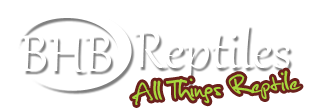The Blizzard Leopard Gecko Morph: A Glimpse into Its Origin and Unique Appearance
Leopard geckos (Eublepharis macularius) exhibit a stunning variety of colors and patterns, thanks to the ongoing efforts of breeders. One morph that stands out in this array of diverse appearances is the Blizzard morph. Let's dive into the history of this intriguing leopard gecko morph and describe its unique look.
Origin of the Blizzard Leopard Gecko Morph
The Blizzard morph is a product of careful and selective breeding by herpetologists. The first Blizzard leopard gecko was successfully bred in 1995 by Jay Villa of Prehistoric Pets. This morph is a testament to the power of genetic combinations and the art of breeding leopard geckos. It's worth noting that Blizzard is a recessive trait, requiring both parent geckos to carry the gene to produce a Blizzard offspring.
What Does a Blizzard Leopard Gecko Look Like?
As the name suggests, Blizzard leopard geckos exhibit a 'blizzard' of unique visual characteristics. Unlike their wild counterparts, Blizzard geckos lack the typical spotting and present a uniform color throughout their bodies. Their coloration varies, ranging from pure white to yellow or even purplish-grey, earning them the name "Blizzard".
Their eyes, too, add to their distinctive appearance. Blizzard geckos commonly have solid black eyes or eyes with a distinct eclipse trait, which gives them a strikingly beautiful and somewhat eerie look.
Blizzards can be combined with other morphs to create variations such as the Patternless Blizzard or the Eclipse Blizzard, each adding another layer of complexity and beauty to this captivating morph.
Final Thoughts
The Blizzard Leopard Gecko morph, with its distinctive appearance and intriguing origin story, continues to captivate reptile enthusiasts around the world. As with any morph, remember that while aesthetics are important, the overall health and well-being of the animal should always be the primary concern.
